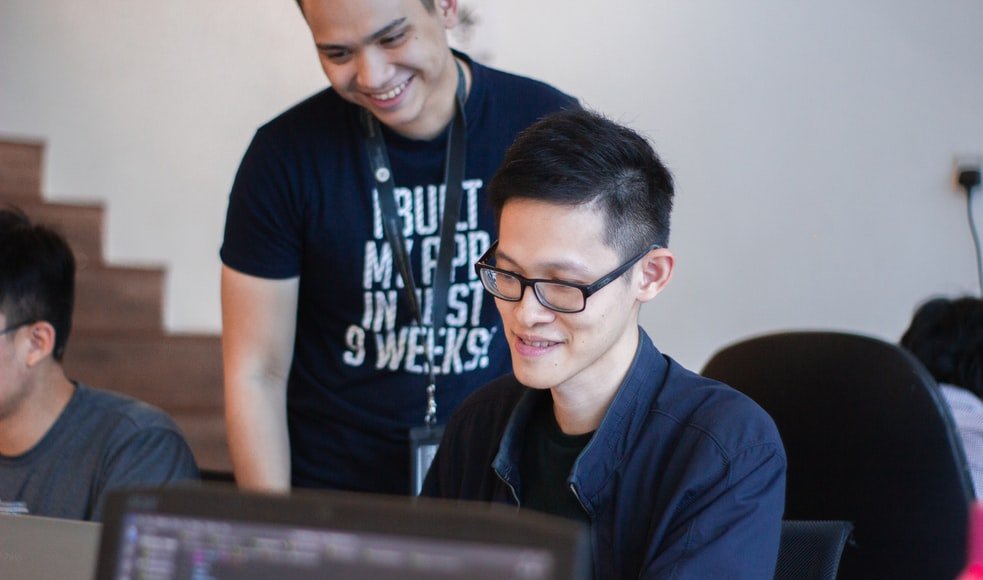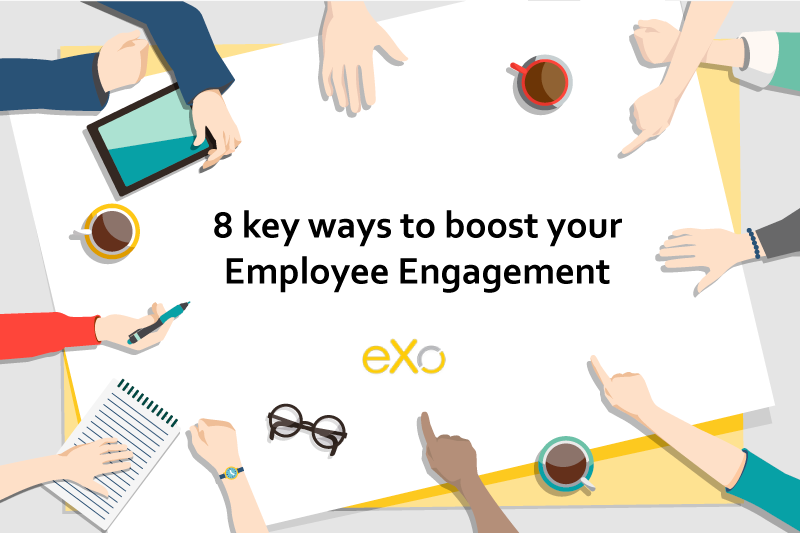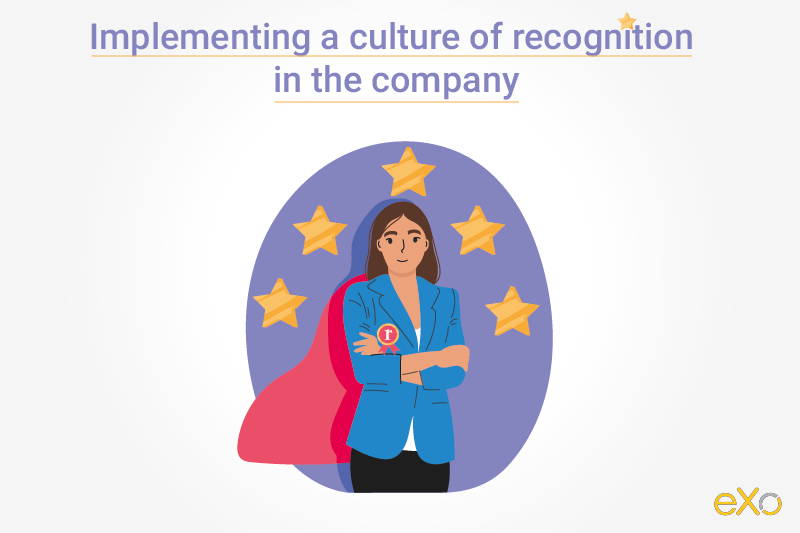- Fares Laroui
- October 13, 2021
How to implement a successful buddy program
Starting a new job is an experience often filled with both excitement and a sheer amount of stress. At the end of the day, getting used to a new position, responsibilities surroundings and people can be overwhelming to say the least, especially in the absence of clear and concise processes.

Content
This is why companies often place the emphasis on onboarding in an attempt to quickly get new hires up to speed, guaranteeing both their short and long term engagement and avoiding unexpected and costly departures. However, as is the case with any process in the workplace, employee onboarding is greatly influenced by a multitude of factors including but not limited to: the corporate policy, the technologies in use, and of course, the culture. This requires businesses to take these factors into consideration and thoroughly study their existing positions as well as their teams’ needs to provide the ultimate onboarding experience.
In previous blog posts, we have focused on employee onboarding from a more or less formal or perhaps traditional perspective. We have looked at the role of the HR department and team managers and how they can jointly put together an effective employee onboarding process.
In today’s blog post, we are going to shed light on a less known yet highly effective onboarding method: Buddy programs. First, we will define buddy programs as a concept along with its benefits. Then, we will explore how digital workplace solutions can help you set up a buddy program.
1. What is a buddy program?
In a nutshell, a buddy program or system is an onboarding technique used by businesses to facilitate new employees’ integration through a less formal, cooperative and social approach. As opposed to traditional onboarding methods, a buddy program -as its name implies- uses “buddies” to assist new hires get going at their new jobs within their first weeks or months. Generally speaking, “buddies” represent selected employees within the company renowned for their soft and social skills. The ultimate goal of a buddy program is to build on the existing onboarding setup by leveraging the power of social interactions to get the most out of both the new employee and his/her buddy. Based, of course, on a well-documented process, the buddy program encourages both parties to continuously share their experiences, knowledge and best practices.
Additionally, as a transparent and less formal process, buddy programs give new employees the chance to voice their opinion, provide feedback on the onboarding experience and share any concerns with their counterparts (something, they usually wouldn’t be willing to share with their managers and direct supervisors).
2. Why are buddy programs important?
Foster social bonds and create an atmosphere of trust
A buddy program shares more or less the same benefits as your traditional onboarding process. The only difference though is in the personnel involved and the formalities of the whole process. Generally speaking, the main objective of a buddy program is to instore an atmosphere of trust and transparency where employees feel at ease to share their voice and provide feedback.
The absence of such an atmosphere can lead to unwanted results, as new hires would be lost with no clear point of reference to show them around their new surroundings or help them properly understand their roles and responsibilities. Sure, using wikis, for example, can help employees get going. However, in addition to that, speaking to people (whether in person or using a messaging app) is proven to be a better (or complementary) approach as it helps in both communicating vital information and creating social bonds. The latter would eventually play a key role in engaging new hires and making them feel immediately welcomed at their new company.

Build a strong knowledge sharing culture
It goes without saying that the essence of a successful onboarding experience is knowledge. There are a variety of ways with which companies can equip their new employees with the knowledge they need to start on the right foot. However, there is a small distinction between the types of knowledge in the workplace. Generally, there are two main types: Tacit and explicit.
In short, explicit or codified knowledge is the most common form of knowledge in the workplace. It represents the collection of information primarily stored within, for example, a document management system, wikis, or large databases. Examples of explicit knowledge include, corporate policies, formal training, among a host of other types. Although the cornerstone of onboarding as we know it, explicit knowledge on its own is not enough as it is not experience based and doesn’t give employees the chance to learn directly from their peers.
On the other hand, tacit or implicit knowledge comprises a combination of skills and experiences that can’t be easily processed via, or stored within, a knowledge management system. This is what buddy programs are designed for: allowing employees to exchange their own experiences, best practices and know how.
Upon starting a job, new employees need to familiarize themselves with a host of new procedures, methodologies and technologies. A combination of both explicit and implicit knowledge is the best approach to facilitate learning either via the company intranet, learning management system (LMS) or directly from their assigned “Buddies”. With this being said though, the buddy program doesn’t only concern new employees; existing employees can also benefit from the acquired knowledge of new hires which can bring benefits to the entire organization down the line.
Guarantee high engagement rates
Employee engagement is a process that starts from day one (and even beyond stretching to the job interview itself). With this in mind, businesses need to consider first impressions and the impact they might have on long term employee engagement.
Let’s face it, if within the first couple of days, your new hire doesn’t feel welcomed and feels lost and confused, chances are that he/she would carry that first impression going forward.
Buddy programs come in handy to engage employees right from the start. With an assigned buddy, a new employee would immediately get a good first impression. They would feel welcomed, well informed and immediately part of the team and the organization as a whole.
Enhance proficiency and performance
The amount of time required to get new employees proficient at their new job is indicative of their long term performance.
This is why businesses often allocate a host of methods to shorten the learning curve and put their new hires in the best possible position to perform. According to an HCI report, 87% of organizations with a buddy program in place stated that it is an effective way to get employees proficient in the shortest amount of time. And the reason is fairly simple. With an assigned buddy, the new employee would have a point of reference that will help him/her learn the job’s requirements faster and be comfortable enough to voice any feedback. This makes the learning experience more interactive and conversational which eventually leads to a better business performance as a whole.

3. How to leverage your digital workplace to set up a buddy program?
Modern digital workplace solutions encompass a host of features that can be leveraged to properly set up a buddy program. These features cover the whole communication and collaboration scope which can help, launch the program, equip the involved parties with the tools to communicate, and later measure the program’s success.
Generate interest
Like any new initiative in the workplace, it is crucial to first test the waters and later generate interest. In the case of a buddy program, make sure to check whether your employees are interested in the first place. For this, you can use brief surveys of a couple of questions in order to both check employees’ eagerness to participate and their schedule in case they are.
Then the digital workplace can act as your central communication hub. There you can share articles in which you will outline the program’s main objectives and goals, duration, buddies main responsibilities, and schedule.
Match new hires with their workplace buddies
The process of matching new employees with their workplace buddies is one that requires you to consider many factors. Of course, the first thing you should look for is the feedback of the new hire. Check what type of buddy they want to be paired with in the first couple of weeks (be it a person who is involved in training, someone who periodically checks on them, etc.).
Whether the process is manual or automated (using an algorithm to match participants), you can easily select the best suited buddy for your new employee and guarantee that the whole process starts on the right track.

Foster Community mentoring
It is well known fact that Individuals can learn more from each other than from traditional or even modern learning techniques. Having a buddy program in place encourages and promotes community mentoring. Such programs are ideal for new hires as they provide the much needed guidance at the start of their new job. More experienced individuals can also benefit from such programs to learn new skills.
You can leverage the power of collaborative spaces within your digital workplace to group employees based on either work or non-work related activities. Each space comes equiped with a variety of apps and acts as a unifying space where employees can interact with each other, share their experiences and interests for specific topics.
Schedule workflows
Once you have matched your new hire with his/her buddy, the next step is to create dedicated workflows to organize the whole process. Although buddy programs are renowned for their less formal approach, it is always important to follow a specified workflow. For example, regular or check-up meetings, training sessions and any other activities can be easily created and scheduled using your digital workplace built-in tasks management application. There, the participants along with, of course, team managers can check the progress of the entire process and intervene to make any changes.
Enable constant communication
Buddy programs are all about communication. With remote working being on the rise lately, all forms of communication need to happen through digital channels. This is where you can leverage the power of your digital workplace to make sure all the involved parties are able to communicate in real-time through both chat or videoconferencing. This will ensure your new hire is in constant communication with his/her workplace buddies and helps create and maintain social bonds. Encourage them to create a custom email signature with link to their social profiles to network and share more information with colleagues and other email recipients.
Gamifiy the onboarding process
Onboarding, in general, is a tedious and (let’s face it), a broing process. This is why, we have seen many companies refer to gamification in an attempt to make the process more fun and encourage both new hires and existing employees to collaborate more often. Based on a points system, an integrated gamification system allocates points based on users’ activity. For example, every time a new hire completes a task such as a training course for example, he/she will earn a specific amount of points. On the other hand, everytime a buddy responds to a question or check in on a new hire, he/she will also earn points. The earned points will be visible on leaderboards, whcih can create some sort of a healthy competition among employees, and eventually lead to a more effective onboarding experience.
Measure the program’s impact
Measuring the impact of a buddy program is a bit tricky. There are a lot of metrics to keep track of and the results -at times- can’t be effectively visualized only after a couple of months if not years (we are talking about long term engagement and retention). However, in terms of initial feedback and job satisfaction, surveys are your best bet. Try to send engagement surveys to both new hires and their buddies in order to get their feedback on the whole experience and pinpoint any areas of improvement. You can also use your digital workplace analytics module or a third party analytics tool such as Google
Analytics to look for more quantified data. For example, you can check the number of spaces a new hire joined, which type of content they share or interact with, how many tasks they have completed during the onboarding process and much more. This data can be indicative of a new hire’s initial level of engagement and involvement, although it lacks the more qualitative dimension (which can only be gathered through surveys or direct interviews).
Get in Touch with our Experts
Get in Touch with our Experts
Learn How we Can Help Your Teams Collaborate and Get Things done
FAQ
What is a buddy program?
In a nutshell, a buddy program or system is an onboarding technique used by businesses to facilitate new employees’ integration through a less formal, cooperative and social approach.
What is an intranet?
intranet is a term used with abundance whenever the subject of internal communication and collaboration is brought up which makes defining it a bit challenging. In its simplest form, an intranet is an internal website for your organization. It is used mainly for top-down communication where employees can access corporate news, policies and announcements.
What is a buddy program?
In a nutshell, a buddy program or system is an onboarding technique used by businesses to facilitate new employees’ integration through a less formal, cooperative and social approach.
Why are buddy programs important?
- Foster social bonds and create an atmosphere of trust
- Build a strong knowledge sharing culture
- Guarantee high engagement rates
- Enhance proficiency and performance
How to implement a successful buddy program?
Modern digital workplace solutions encompass a host of features that can be leveraged to properly set up a buddy program. These features cover the whole communication and collaboration scope which can help, launch the program, equip the involved parties with the tools to communicate, and later measure the program’s success.
- Generate interest
- Match new hires with their workplace buddies
- Foster Community mentoring
- Schedule workflows
- Enable constant communication
- Gamifiy the onboarding process
- Measure the program’s impact
➝ Find out how to leverage your digital workplace to set up a buddy program
Related posts
- All
- eXo
- Digital workplace
- Open source
- Internal communication
- Collaboration
- News
- intranet
- Future of work
- workplace
- Knowledge management
- Employee engagement
- Employee experience
- Employee productivity
- onboarding
- Employee recognition
- Change management
- Cartoon
- Digital transformation
- Infographic
- Remote work
- Sneak Peek
- Solutions
- Thought leadership
- Tips & Tricks
- Tutorial
- Uncategorized
Leave a Reply
( Your e-mail address will not be published)


